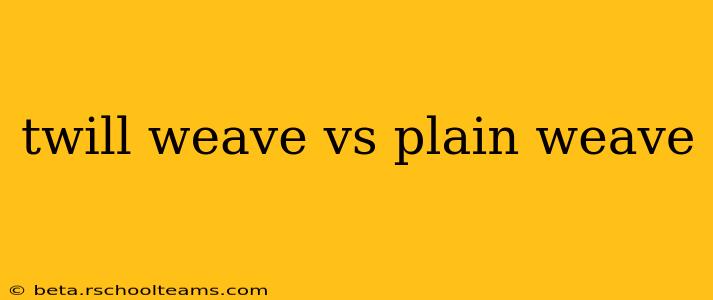Choosing the right fabric for your project depends heavily on understanding the weave structure. Two of the most common weaves are plain weave and twill weave, each offering distinct characteristics that impact drape, durability, and overall aesthetic. This guide delves into the key differences between twill weave and plain weave, helping you make informed decisions for your sewing, clothing, or textile projects.
What is Plain Weave?
Plain weave, also known as tabby weave, is the most basic and simplest textile weave. It's characterized by a simple over-under pattern of warp and weft yarns. Each warp yarn passes over one weft yarn and then under the next, repeating this pattern consistently across the fabric. Think of a checkerboard pattern—that's the essence of plain weave.
Characteristics of Plain Weave:
- Appearance: Even, balanced, and relatively smooth surface.
- Durability: Moderate durability; prone to wrinkling and snagging.
- Drape: Can vary depending on the yarn used, but generally has a stiffer drape than twill.
- Examples: Muslin, cotton broadcloth, calico, and many inexpensive cotton fabrics.
What is Twill Weave?
Twill weave is a more complex weave structure than plain weave. Instead of a simple over-under pattern, twill weave uses a diagonal pattern created by the weft yarn passing over and under two or more warp yarns before shifting its position. This creates the characteristic diagonal lines—the twill lines—visible on the fabric's surface. The angle and direction of the twill lines can vary.
Characteristics of Twill Weave:
- Appearance: Diagonal lines, strong visual texture.
- Durability: More durable and stronger than plain weave due to the interlacing pattern. More resistant to wrinkles and snags.
- Drape: Generally has a softer, more flowing drape than plain weave.
- Examples: Denim, gabardine, herringbone, and cavalry twill.
Twill Weave vs. Plain Weave: A Head-to-Head Comparison
| Feature | Plain Weave | Twill Weave |
|---|---|---|
| Weave Structure | Simple over-under | Diagonal, over-under multiple warp yarns |
| Appearance | Even, balanced, smooth | Diagonal lines, textured |
| Durability | Moderate, prone to wrinkling | High, wrinkle-resistant |
| Drape | Stiffer | Softer, more flowing |
| Cost | Generally less expensive | Generally more expensive |
| Uses | Muslin, cotton broadcloth, calico | Denim, gabardine, suitings |
What are the advantages of twill weave?
The primary advantage of twill weave lies in its superior durability and strength. The more complex interlacing of yarns creates a fabric that's less likely to snag or tear, making it ideal for garments and applications that require resistance to wear and tear. The diagonal structure also contributes to a better drape and wrinkle resistance.
What are the advantages of plain weave?
Plain weave's simplicity makes it cost-effective and easy to produce. Its smooth surface is suitable for various printing and dyeing techniques. While less durable than twill, plain weaves are perfectly suitable for many applications where strength is not a primary concern.
Which weave is better?
There's no single "better" weave; the optimal choice depends entirely on the intended use. Plain weave is excellent for inexpensive fabrics, while twill weave is superior when durability, drape, and wrinkle resistance are paramount. Consider the project requirements—will it endure significant wear? Does it require a specific drape? The answers to these questions will guide your decision.
How can I identify the weave of a fabric?
Identifying the weave often requires a close examination of the fabric. Look for the distinct diagonal lines characteristic of twill weave, or the simple, consistent over-under pattern of plain weave. Holding the fabric up to light can also help visualize the weave structure.
This comprehensive comparison of twill weave and plain weave should equip you with the knowledge to select the appropriate fabric for your next project. Remember to consider not only the weave but also the fiber content and fabric weight to make the best choice.
